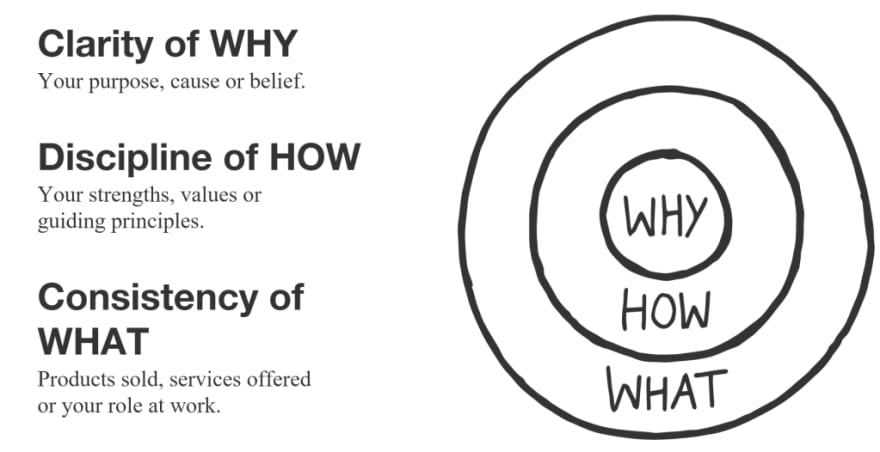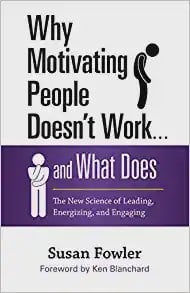This blog post is different than the usual content from here. This time I would like to share with you 3 books that helped me a lot in my career as a leader.
I love to read books and after I finish reading a book I do a schema or a summary, or a mindmap to extract the useful info for me, to build my leadership toolbox.🧰
From these 3 books, I learned more about myself, about how important is to understand my WHY, or how helpful are OKRs even to build a personal learning plan. I also understood how essential is to create a context where my team can be successful and motivated to do their best.
Happy reading! 🤓📚
1. “Start with why” by Simon Sinek
The author starts the book by making the distinction between a leader and the one who leads: “There are leaders and there are those who lead. Leaders hold a position of power of influence. Those who lead inspire us”.
Great leaders are able to inspire people to act by giving them a sense of purpose or belonging. For those who are inspired, the motivation to act is deeply.
This book is not about what to do or how to do the things in our life or at work, its purpose is to offer us the cause of action, it challenges us to start with WHY.
The core of the book is The Golden Circle. There are three parts of The Golden Circle: Why, How, and What.
- The outermost and largest circle is WHAT : Every individual or organisation easily explain what their product or job is.
- The middle circle is HOW : HOW is not as obvious as WHAT. But when organisations know HOW they do WHAT they do, they have clarity in their product or service’s differentiating factor. This is also known as Unique Selling Proposition or “differentiating value proposition”.
- The innermost and smallest circle is WHY : It is very difficult for organisations or people to explain WHY they do WHAT they do. The WHY needs to be answered in terms of purpose, cause or belief.
The WHY and HOW are connected to the limbic brain and the WHAT with the neocortex.
- Limbic brain = Responsible for all feelings, like trust and loyalty. It’s also responsible for all human behavior and decision-making, yet it has no capacity for language.
- Neocortex = Responsible for all of our rational and analytical thought, and language.
How do you differentiate between a fad and an idea that can change lives forever?
The Law of Diffusion of Innovations stated by Everett M. Rogers pertains to the bell curve of product adoption. The curve outlines the percentage of the market who adopt your product, beginning with the Innovators (2.5%), followed by Early Adopters (13.5%), Early Majority (34%), Late Majority (34%) and Laggards (16%).
The Golden Circle + The Cone
The Golden Circle is actually a bird’s eye view of a cone which represents the three- dimensional structure of organisations.
When you have beliefs, a why, your what is just one of the ways of bringing that why to life. Often people don’t know what they’re going to do. They know what they believe, and they find their what along the way. e.g. Simon Sinek believes in inspiring others. Writing a book is just one way of doing it.
The leader sits at the top of the cone — at the start, the point of WHY — while the HOW-types sit below and are responsible for actually making things happen. The leader imagines the destination and the HOW-types find the route to get there.
💡To learn more about this topic:
2. “Measure what matters” by John Doerr
OKR is about goal setting in a collaborative way.
As the former Intel CEO Andy Grove explained in his book, “High Output Management”, there are two questions to be answered to successfully setup a system of shared objectives, like OKRs:
- Where do I want to go? This answer provides the objective. (WHAT)
- How will I pace myself to see if I am getting there? This answer provides the milestones, or key results. (HOW)
John Doerr, one of Google’s early investors and a current Board of Directors member, learned about OKRs from Andy Grove while at Intel.
OKRs superpowers:
- Superpower #1 => focus and commit to priorities
- Superpower #2 => align and connect for teamwork
- Superpower #3 => track for accountability
- Superpower #4 => stretch for amazing
An OKR can be modified or even scrapped at any point in its cycle and Key Results should be:
- Succinct
- Specific
- Measurable
Too many objectives can blur our focus on what counts so we should keep our focus and set a number of objectives not greater than 5, because if we try to focus on everything we focus on nothing.
Continuous performance management could be done using OKRs in combination with CFRs :
- Conversations : an authentic, richly textured exchange between manager and contributor, aimed at driving performance
- Feedback : bidirectional or networked communication among peers to evaluate progress and guide future improvement
- Recognition : expressions of appreciation to deserving individuals for contributions of all sizes
💡To learn more about this topic:
3. “Why Motivating People Doesn’t Work . . . ” by Susan Fowler
Inspiring and motivating people are key aspects of leadership that are as critical as they are elusive. The people are always motivated. The right question we should ask is not if they are motivated, but what motivates them?
The real secret to motivation is creating an environment where people are optimally motivated to perform at their highest level.
The author describes in the book a spectrum of Motivation Model:
Disinterested motivational outlook: People find no value in going to meetings — they think it wastes time or overwhelms them.
External motivational outlook: People view meetings as an opportunity to use their positions or power, improve their images in the eyes of others, or gain the promise of rewards.
Imposed motivational outlook: People feel pressured to attend meetings either to avoid feelings of guilt or shame because everyone else is attending or out of fear of what would happen if he or she did not attend.
Aligned motivational outlook: People link meetings to something they value, such as learning, and use the opportunity to learn something or teach others.
Integrated motivational outlook: People link meetings to their larger work or life purpose, such as raising awareness about a certain issue.
Inherent motivational outlook: People naturally enjoy meetings and the sense of camaraderie they create.
What truly motivates people is having three core psychological needs met:
- autonomy
- relatedness
- competence
Collectively known as ARC.
💡To learn more about this topic:
- Interview with Susan Fowler
- Article about Motivation written by James Clear
- All You Need To Know To Motivate Millennials
Originally published at http://magdamiu.com on October 25, 2021.









Top comments (0)